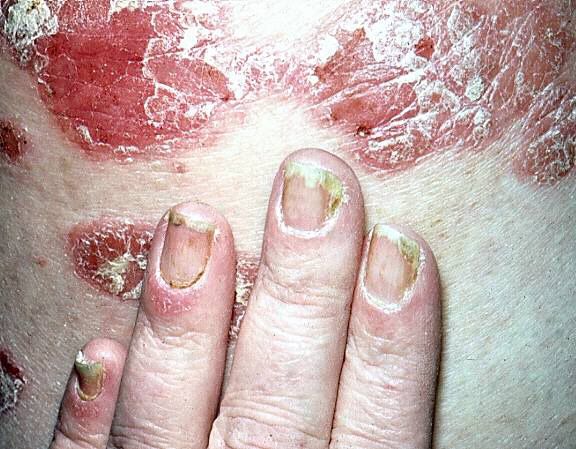- Clinical Technology
- Adult Immunization
- Hepatology
- Pediatric Immunization
- Screening
- Psychiatry
- Allergy
- Women's Health
- Cardiology
- Pediatrics
- Dermatology
- Endocrinology
- Pain Management
- Gastroenterology
- Infectious Disease
- Obesity Medicine
- Rheumatology
- Nephrology
- Neurology
- Pulmonology
Nail Psoriasis
The patient knew that he had psoriasis, but failed to connect onychodystrophy to his underlying skin disease.

A 34-year-old man was concerned about multiple nails that were rapidly becoming discolored and separated from the underlying tissue. He was sure that he had a “nail fungus."
Key point: The patient knew that he had psoriasis but failed to connect onychodystrophy to his underlying skin disease. In fact, the findings of onycholysis-white to yellow nail discoloration and accumulation of subungual keratotic debris-are quite characteristic for psoriatic nail disease. His well-defined plaque psoriasis is also shown.
Treatment: Nail psoriasis is often difficult to treat. Intralesional posterior nailfold injections of a mid-potency corticosteroid suspension (eg, triamcinolone 3 to 5 mg/mL) often help, but they are very painful. If the patient’s psoriasis is severe enough to warrant biologic drug therapy (eg, etanercept, adalimumab, infliximab, ustekinumab), the nails will often improve dramatically.
Note: Only about half of all dystrophic nails are caused by dermatophyte infection. Psoriasis and trauma are common alternative causes of nail dystrophy.
